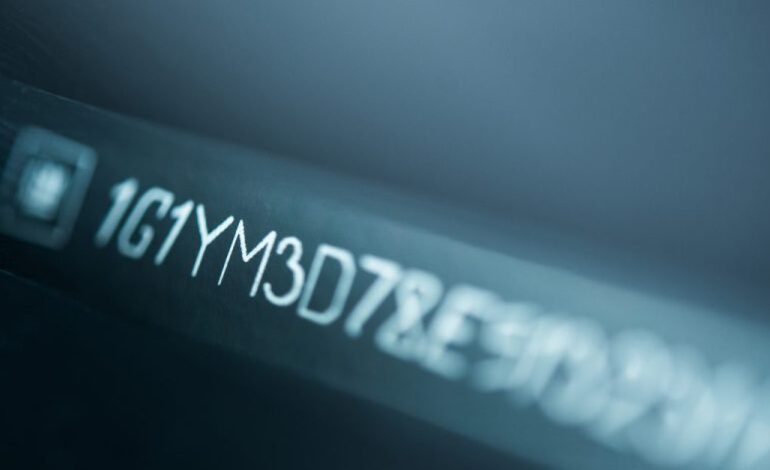Uncover Vehicle History: A Complete Guide to VIN Lookups

Understanding how to look up vehicle specifications using a Vehicle Identification Number (VIN) is essential for anyone considering the purchase of a used car. A VIN serves as the unique identifier for each vehicle, providing critical information on its history and specifications. The process of decoding this 17-character string is straightforward, thanks to resources made available by various organizations.
The Importance of a VIN
Every vehicle manufactured for the U.S. market since the 1981 model year is assigned a VIN, which acts like the vehicle’s fingerprint. No two vehicles have the same VIN, making it a vital tool for buyers and sellers alike. This unique identifier is governed by the international ISO 3779 standard and is enforced within the United States by the National Highway Traffic Safety Administration (NHTSA).
The VIN is crucial for numerous reasons. Law enforcement agencies rely on it to trace stolen vehicles, while insurers use it to confirm a car’s identity when processing claims. Manufacturers utilize the VIN to inform owners of safety recalls, and parts suppliers depend on it to ensure they provide the correct components. Furthermore, vehicle history report providers base their services on the information derived from this number, revealing details such as prior ownership, accidents, and even open recalls.
Locating Your VIN
Finding the VIN on a vehicle is relatively simple. The most accessible location is at the base of the windshield on the driver’s side, visible through the glass. Additionally, it can often be found on the driver’s door jamb near the latch. If the vehicle has undergone modifications that obscure these locations, other stamped versions of the VIN may be present on the engine or frame.
Importantly, the VIN is also included on the vehicle’s title certificate, registration card, and insurance policy, allowing for easy access to this critical information.
Decoding the VIN
A properly decoded VIN reveals a wealth of information about the vehicle. The first three characters denote the World Manufacturer Identifier, which identifies the manufacturer and country of origin. Characters four through eight provide specific details regarding the vehicle’s mechanics, including engine type, transmission, and body style. The ninth character serves as a check digit to validate the VIN’s accuracy. The remaining characters offer historical context, such as the model year and assembly plant.
While the VIN provides a snapshot of the vehicle as it was originally built, it cannot account for modifications made after manufacturing. Changes such as engine swaps, aftermarket parts, or bodywork may not be reflected in the VIN data. Additionally, the VIN does not capture unreported incidents such as flood damage or odometer discrepancies.
Free Government VIN Lookups
Before investing in a vehicle history report, potential buyers can utilize the NHTSA’s public VIN decoder. This free tool accesses the same data that manufacturers are legally required to submit before a model’s release. By entering the VIN, users can confirm its validity and obtain detailed information, including make, model, engine specifications, and safety recall status.
The NHTSA decoder also cross-references current safety recalls, allowing users to see if any open recalls affect the vehicle. This real-time information can be crucial for ensuring the vehicle’s safety and compliance with current regulations.
Supplementary Checks
After using the NHTSA tool, buyers should consider additional free resources. The National Insurance Crime Bureau offers a VINCheck service that identifies stolen vehicles and those deemed a total loss. Similarly, iSeeCars provides a comprehensive VIN Check that includes a wide range of data points beyond basic specifications, such as price history, accident indicators, and market recommendations.
For a more in-depth analysis, paid vehicle history reports from providers like Carfax and AutoCheck can be invaluable. These reports include information not available through free services, such as detailed accident histories, previous ownership records, and service entries. While these reports may cost between $10 and $40, the investment can save buyers from costly surprises down the line.
In conclusion, knowing how to look up vehicle specifications by VIN is not just a useful skill; it is essential for making informed purchasing decisions. By utilizing both free and paid resources, prospective buyers can ensure they have a complete understanding of a vehicle’s history and condition.






